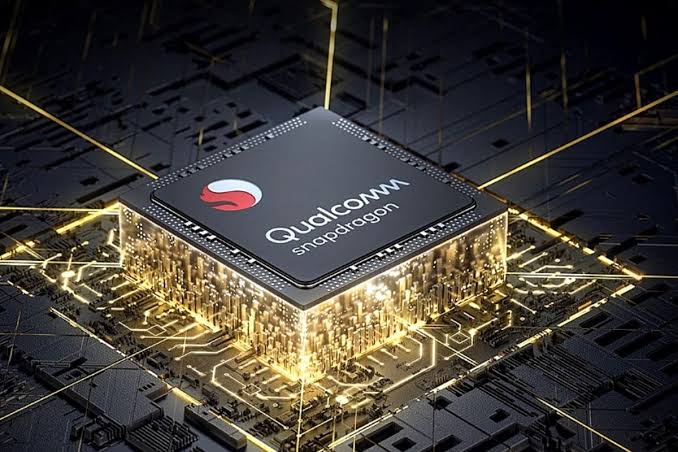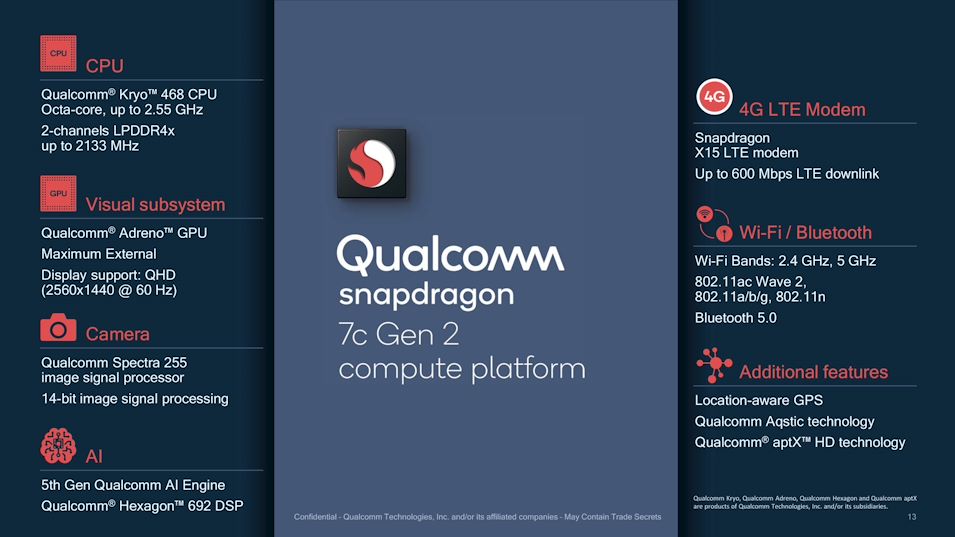
Californian tech giant Qualcomm Technologies Inc on 24 May 2021 has announced launch of the most awaited game changer platform in mobile computing – ‘QUALCOMM Snapdragon 7c Gen 2’. The company already had snapdragon 7C chipsets for devices which is one of the best seller product of the company, Gen 2 chipset will be for entry-level devices. Coronavirus has changed workplace rules all over the world. Due to lockdown imposed in every corner of the world work from home, remote working has become the new normal.
Work from home requires fast working internet and a reliable high powered device. Not everyone can purchase high-end and high-performance laptops, MacBooks or chrome books, to bridge that gap QUALCOMM technologies will introduce Gen 2 chipsets in entry-level devices. This will be a breakthrough because now technology customers want higher performance, greater efficiency, ability to work from anywhere, more mobility and long battery life. Since it will power entry-level devices all of these game changer features will be available in an economic range, which will enable in bridging the technological gap in a remote working environment.
QUALCOMM launched 7c Gen 2 at a virtual conference event saying that the devices powered by generation 2 chipsets will revolutionise the entry-level device experience. It will enhance security features, AI acceleration, LTE connectivity with WiFi, long battery life, enhanced camera and audio features. The company’s senior director of product management Miguel Nunes shared, “Laptops powered by this platform will redefine mobile computing for education users, first-line workers, and everyday light consumers, enabling reliable and powerful devices that feature advanced AI, and support for multi-day battery life.”

The tag line of 7c Gen 2 is ‘Always on, Always connected’. By pressing a button users will have access to all the data, notifications and applications without waiting for the device to power up. It is a function similar to smartphones where by just pressing the power key user has to access notifications, data and applications.
What exactly has Qualcomm launched?
If we leave all the terminologies aside in layman’s language QUALCOMM has launched a chipset. It is a set of electronic components in an integrated circuit which is called data flow management system. This system supervises the flow of data among processor memory and peripherals. This chipset is usually located in the motherboard. It plays a crucial role in system performance because it manages communication between external devices and the processor.
What has Qualcomm developed for smartphones?

QUALCOMM has developed a snapdragon 778G 5G chipset for powering high-end smartphones. It will power Honour, Motorola, Oppo, Realme and Xiaomi smartphones. 770 8G5G chipset delivers the same features that Gen 2 delivers. It is expected to deliver an improved gaming experience, artificial intelligence powered photo and video experience. Phones will get AI-based noise suppression while on call and an AI-powered photography experience. It will enable a user to capture three photos or videos simultaneously using a wide, ultra wide and zoom lens, just like a professional camera with a zoom ring.
A user can record with all three lenses at the same time and if the user wants, all these photos will be merged in a high-quality video automatically. It will improve battery life while providing high visual fidelity. Qualcomm is also the first company in the world to announce a 10 GB 5G reference design so that using 5G on your laptop, mobile and IoT devices is as easy as breathing. Smartphones powered by 778G are going to hit the market in the second quarter of 2021. 778G is particularly designed for higher tier smartphones because of the growing demand for better platforms from OEMs.
Let’s delve into features of the Gen 2 chipset-

The always on, always connected technology of Gen 2 will demand higher power consumption. To deal with this Qualcomm has enhanced the battery life, a single charge can run up to 19 hours of continuous use. This is twice the battery life of other entry-level laptops, so that the always on, always connected feature does not get hampered because of no power. 7C Gen 2 can stay on standby mode for a week because of efficient power management.
The always on, always display feature will need seamless Wi-Fi and LTE connectivity so that it can provide real-time information, data and notifications. It can switch between trusted Wi-Fi and cellular networks effortlessly and keeps the connection secure. Samsung has this feature in smartphones known as Smart Switch. This feature will foster remote working environments with poor internet connectivity by allowing IT administrators to choose between fast network connections automatically.
7C Gen 2 provides increased security features right from chip to cloud computation. It provides high end security in entry-level devices, provides a layered secure boot with numerous verifications, system starter which will reduce zero day threat to the system by continuous updation. Zero day threat is a software attack that uses the susceptibilities of software that the developer is unaware of. All these facilities will be a game changer in entry-level device experience.
The AI-powered phone will enhance security, improve voice recognition and use computational photography for background effects and gaze correction.
Now, what is computational photography?
Computational photography enhances photos taken by a camera with the help of digital software, these software are present in almost every smartphone. Computational photography techniques like stacking and pixel binning are very commonly used to make images look incredible. Stacking is a technique in which cameras take multiple photos on different exposures and focal lengths.
Later on, these different images are combined by the software so that the best part of each image is retained to create a better picture. Stacking can be commonly seen in HDRphotography. Pixel binning instead of stacking images one over the other combines nearby pixels of the image in high resolution and later refines the image to develop a low noise image. The algorithms tutored on neural networks, process images that would gratify the human eye. Neural networks are designed to function like a human brain. Computational photography has a Night mode, astrophotography mode, portrait mode, panorama, colour toning, deep fusion et cetera.
Who is Qualcomm?
:no_upscale()/cdn.vox-cdn.com/uploads/chorus_image/image/69334702/acastro_180529_1777_qualcomm_0002.0.5.jpg)
QUALCOMM stands for quality communication, is a multinational corporation based in California America. It produces hardware like semiconductors, software and provides services for wireless technology. QUALCOMM has patents of 4G, 5G and WCDMA mobile communication registered in its name. It was started by Irwin Jacobs and 6 other founders in July 1985. Jacobs first moved as an assistant professor at MIT and the University of San Diego where he taught electrical engineering. He co-authored some books in 1965 which are still taught in universities.
The company first started working towards Code Division Multiple Access (CDMA) wireless phone technology and later accepted the 2G standard. The CDMA was adopted alongside GSM for communication in the North American region, this technology later revolutionised the working of cellular networks for which Jacobs won an award. It also develops software for vehicles, watches, laptops, smartphones et cetera. It originally started as a research contract for the government and defence sector, which later developed into a full blown MNC.
QUALCOMM’s snapdragon chipset is its best selling product but it is involved in many other research ventures for innovation such as artificial intelligence. Like said before QUALCOMM is the brainchild of the research agreement and hence exploration will be an integral part of the company. QUALCOMM’s cellular modems are widely used to connect a smartphone to cellular towers and networks in a neighborhood.




